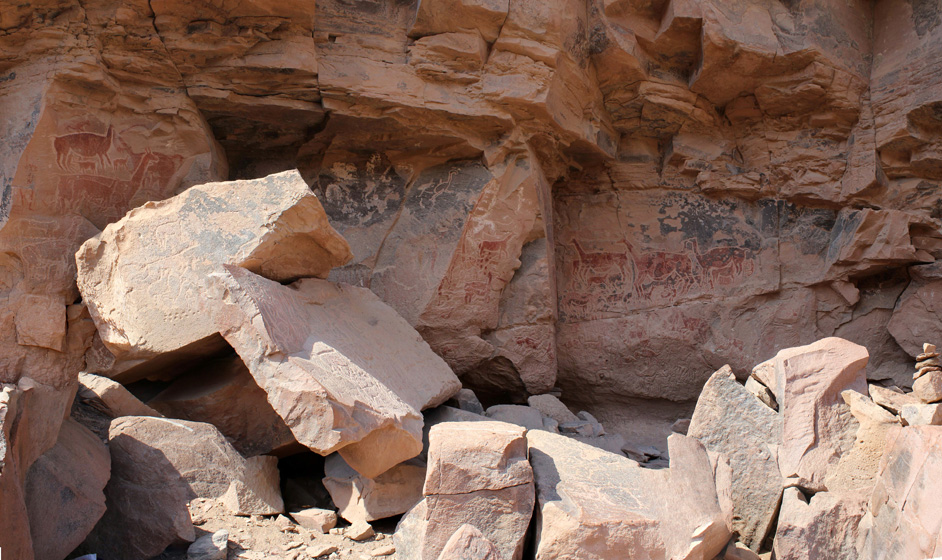Alero Taira is a natural rock shelter situated at the spot where Loa River canyon broadens out from a narrow gorge into a more expansive valley with high altitude wetlands that provide pasture for livestock.
Reaching the shelter isn’t easy. Those who occupied it preferred to keep it hidden from the view of others traveling through the valley. To get there, you must climb up a steep slope, at the end of which the figures painted and engraved onto the canyon walls unfold before your eyes.
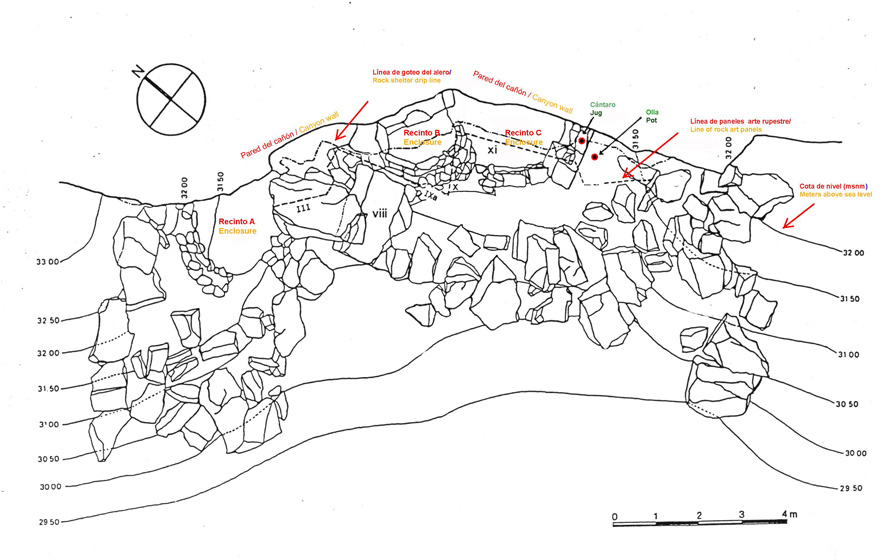
Topographic map of the Alero Taira site.
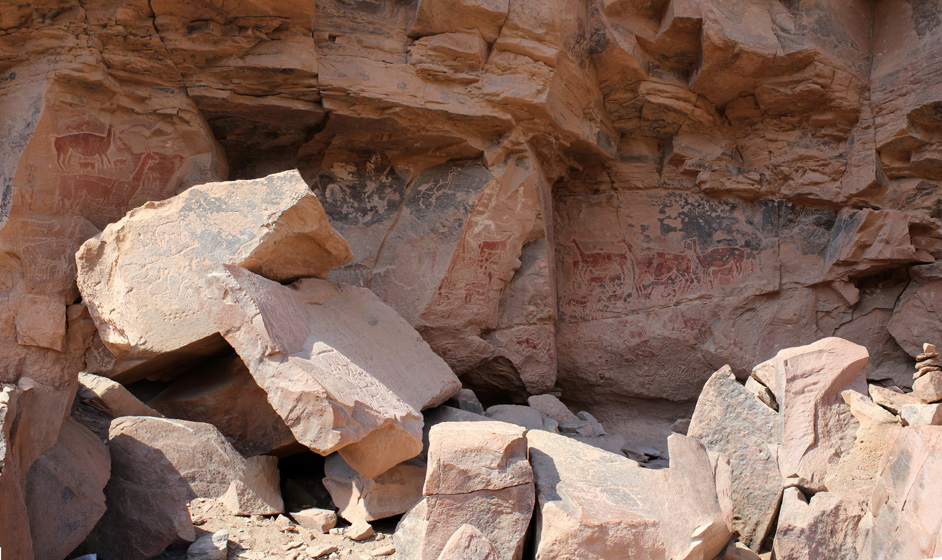
Photo
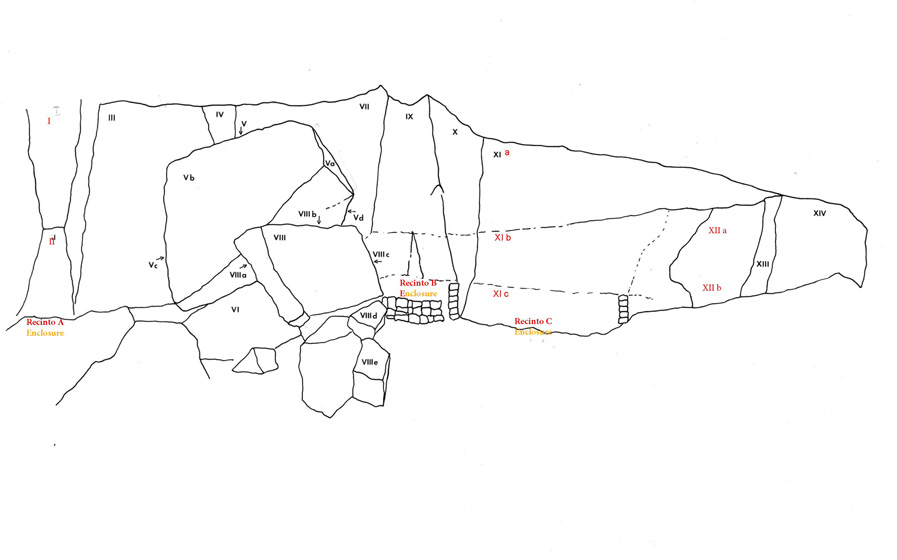
Plan of the Alero Taira site showing its rock art panels.
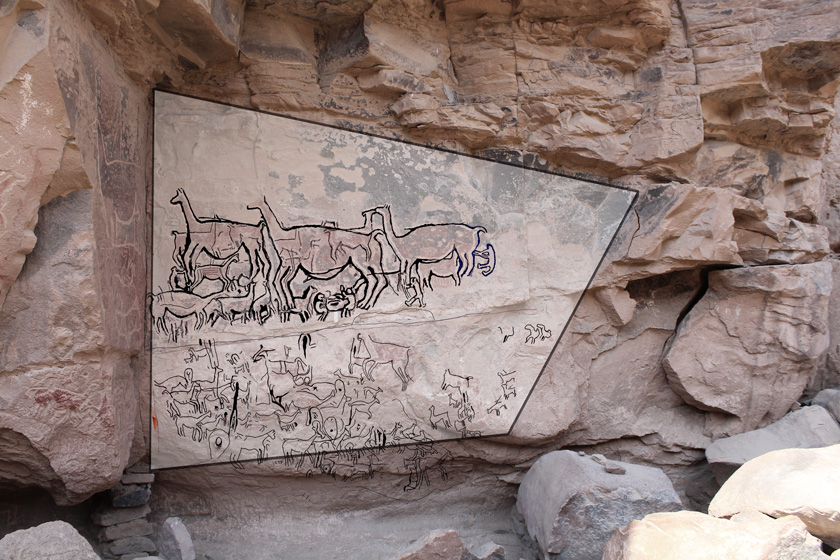
Tracing of the figures found in Panel XI.
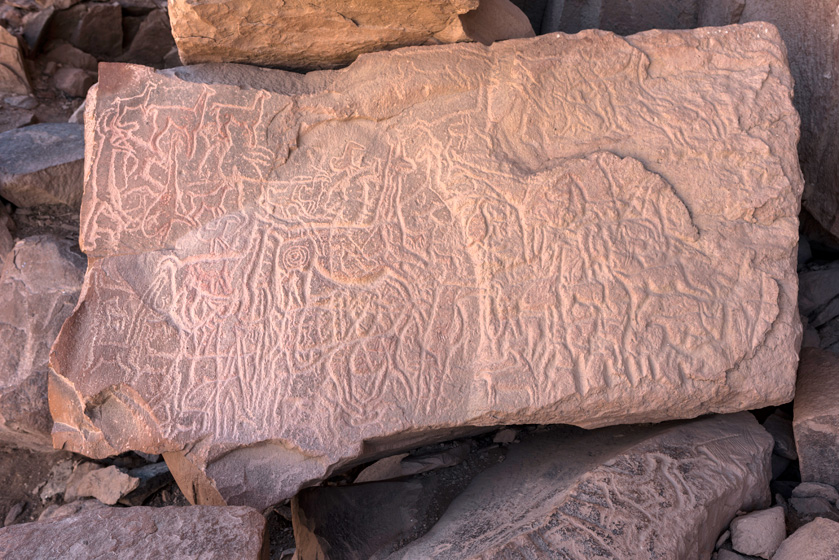
Picto-engravings of Panel VIII, Alero Taira.
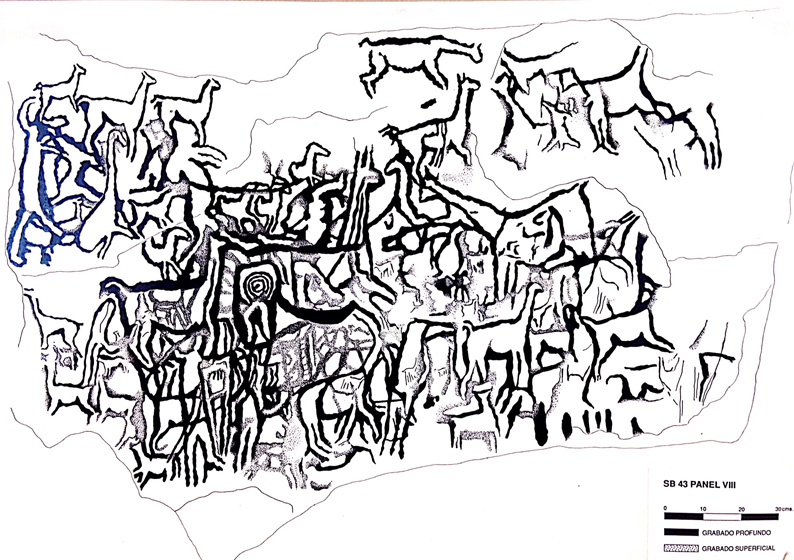
Drawing of the figures found on Panel VIII.
At first glance, the shelter appears to be a colorful, chaotic series of figures and forms. To understand it, the visual information needs to be organized, dividing the figures and forms into “panels” or individual rock faces.
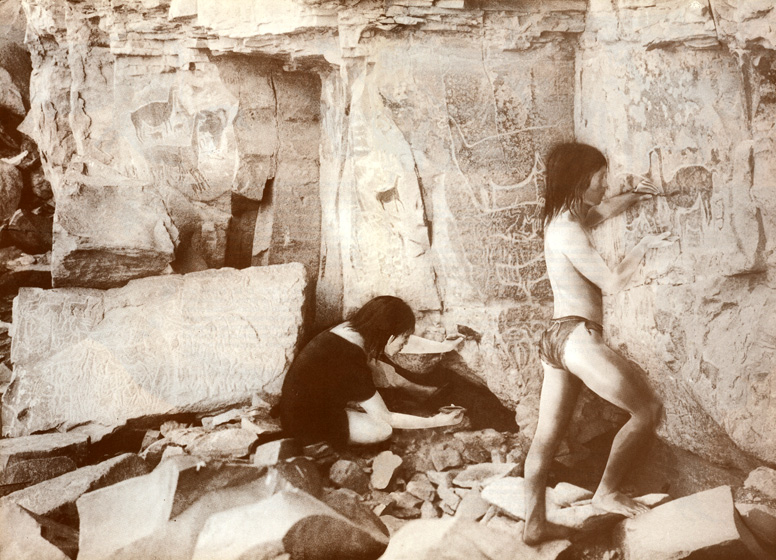
Painting the rock art of Alero Taira (illustration by José Pérez de Arce, 1983).
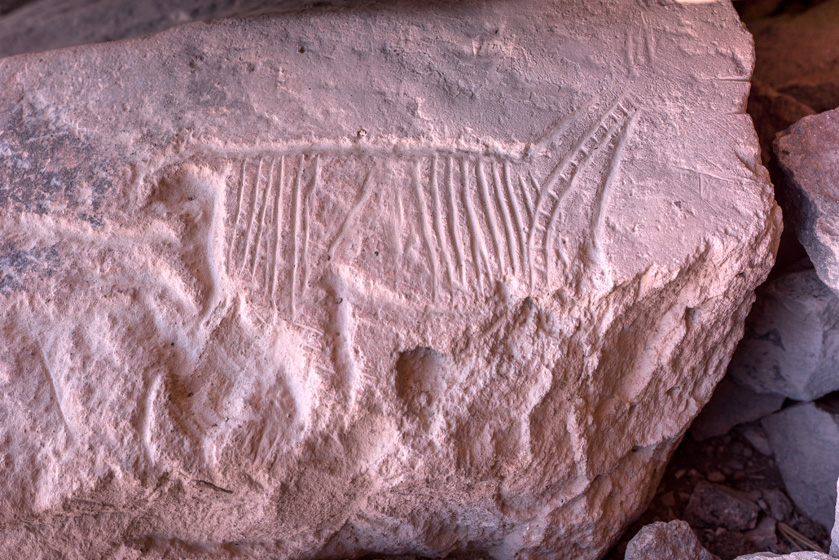
Engraving technique, Panel VIII, Alero Taira.
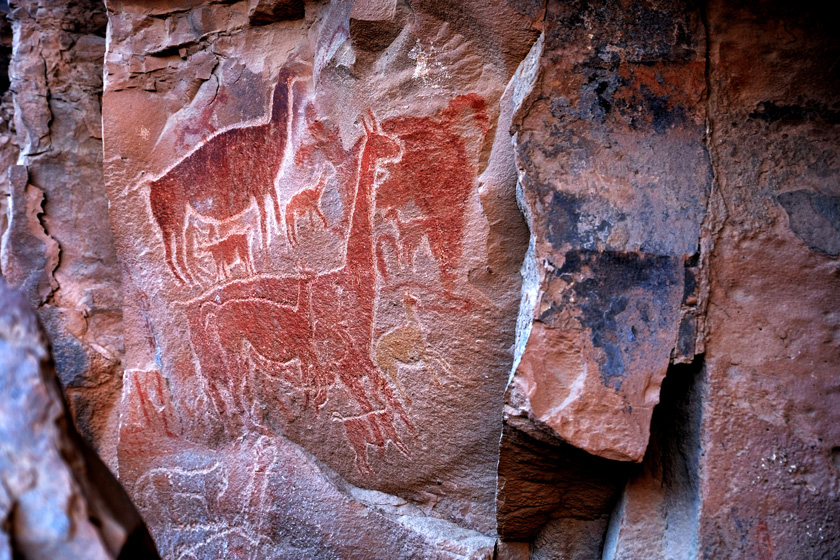
Painting and picto-engraving techniques, Panel III, Alero Taira.
The creators of the images engraved the outer layer of rock by picking or scraping with a harder object. For the paintings, they used pigments prepared from crushed minerals mixed with water and fat to make it easy to apply and adhere to the rock. Most of the images were created using a technique that combined engraving and painting called “picto-engraving”.
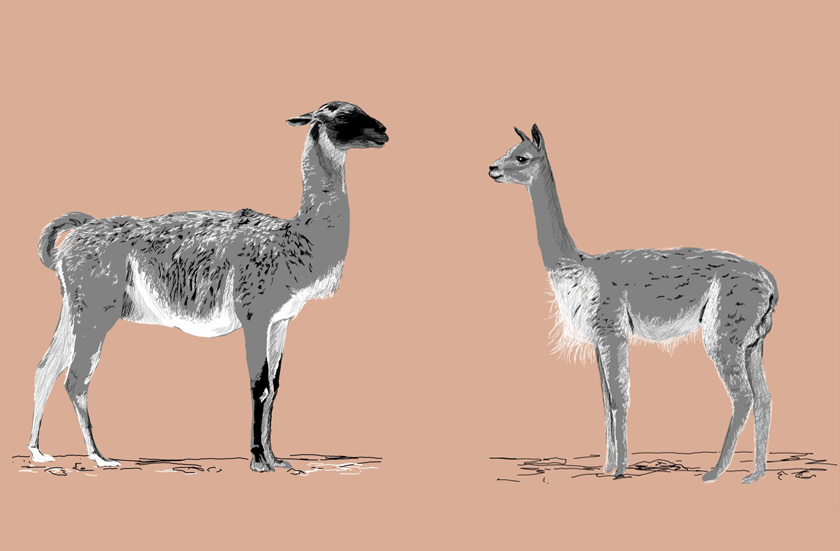
Guanaco and Vicuña.
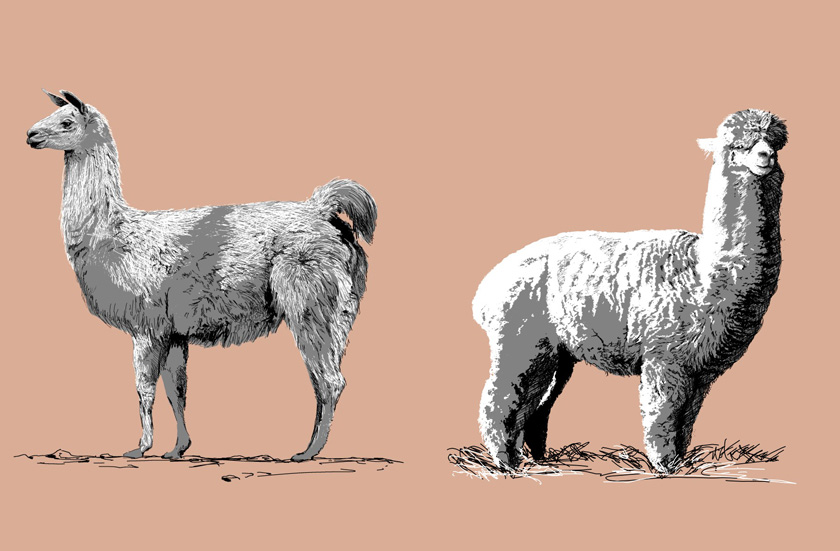
Llama and Alpaca.
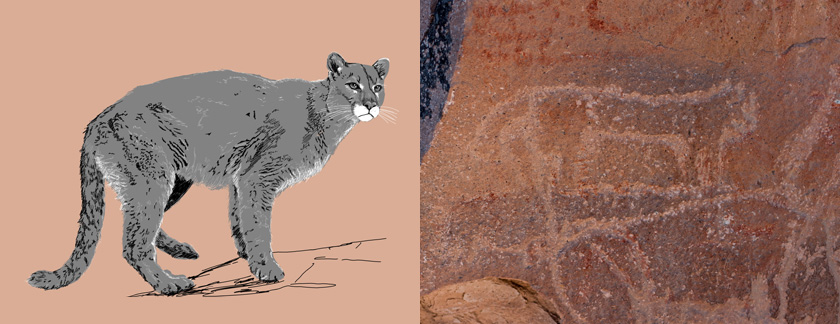
Puma.
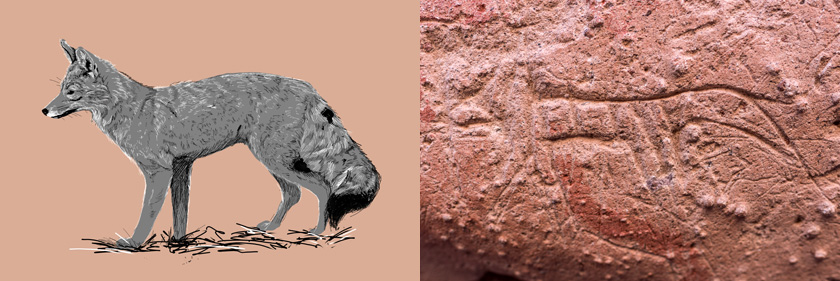
Fox.
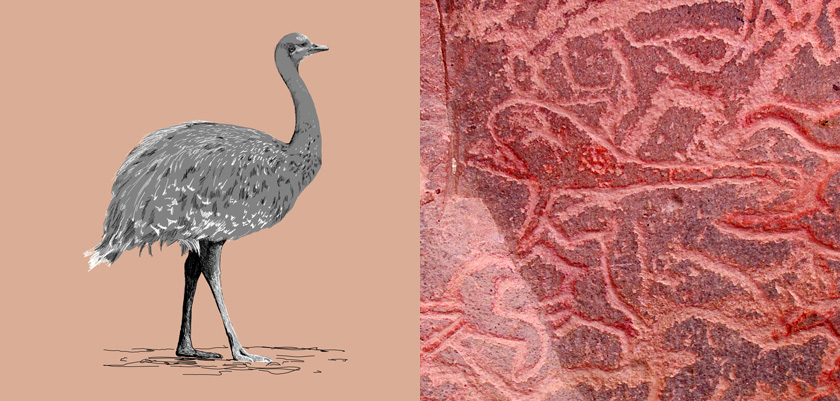
Ostrich.
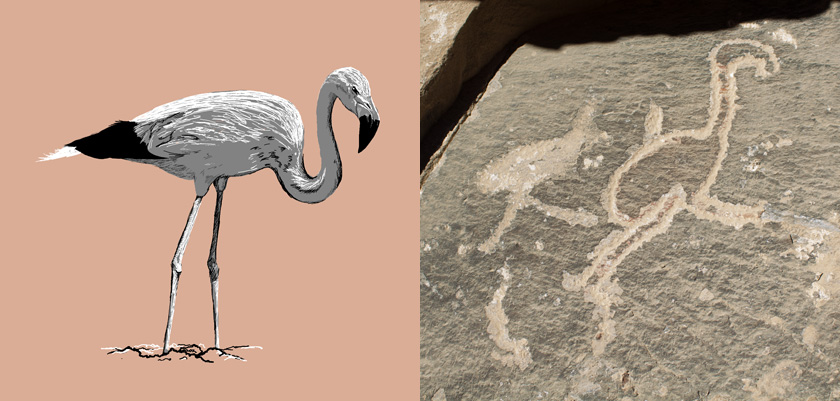
Flamingo.

Tinamou
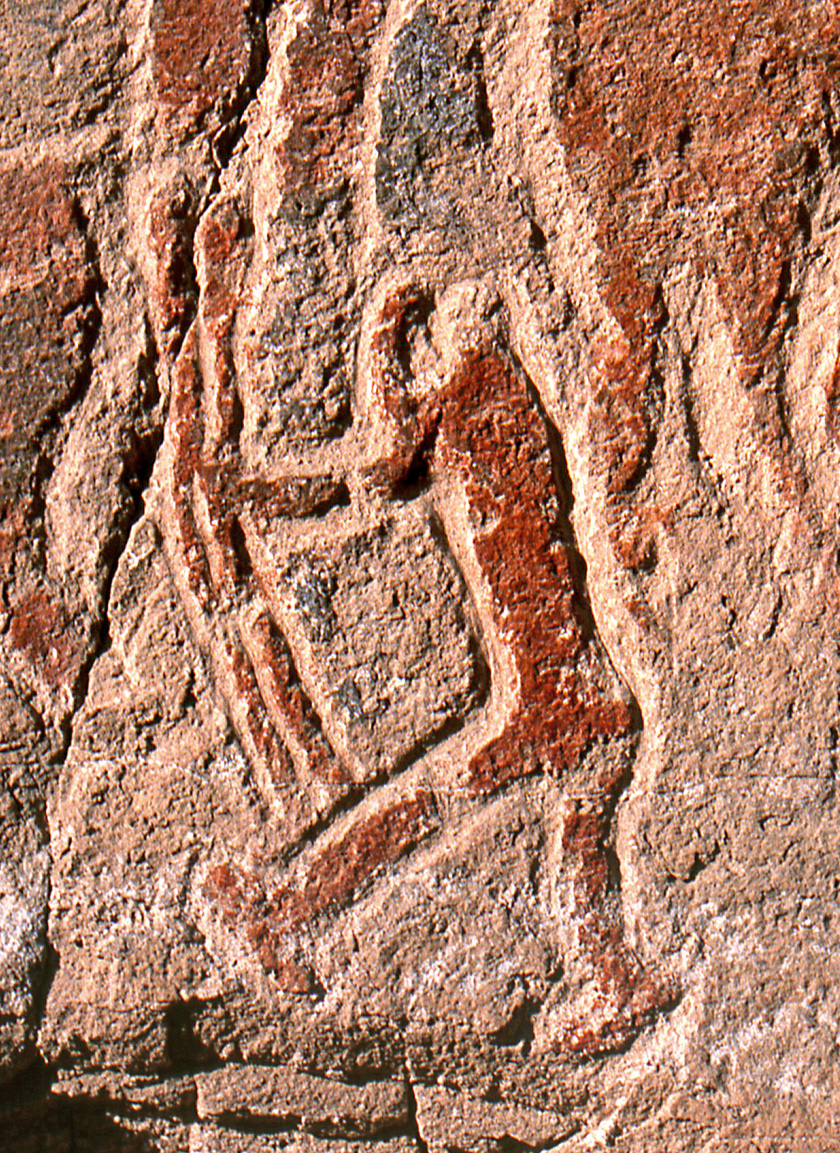
Human figure holding staffs.
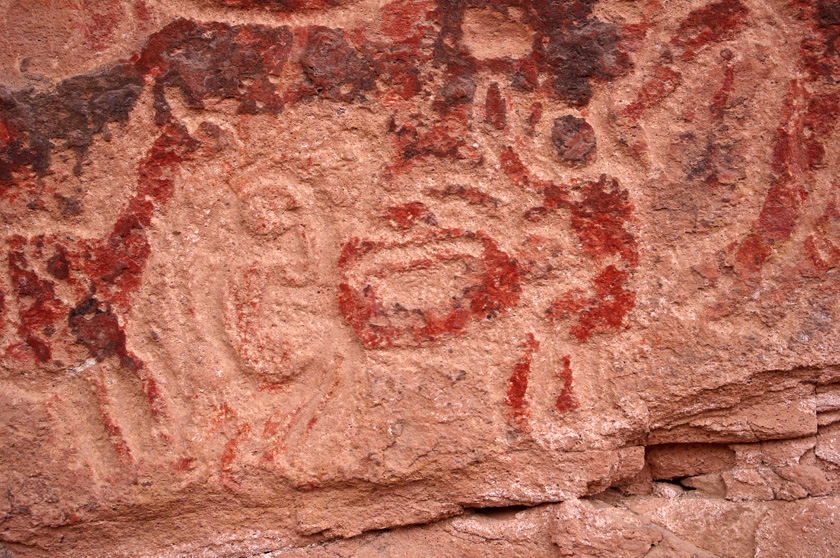
Human figures playing a drum.
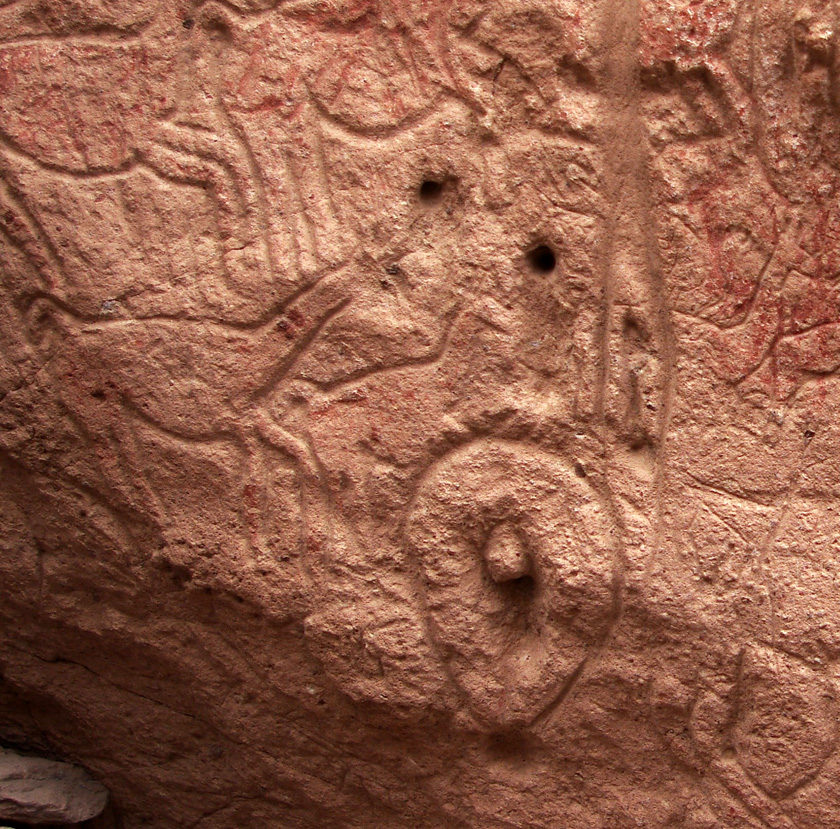
Representation of a camelid vulva and holes carved out of the rock.
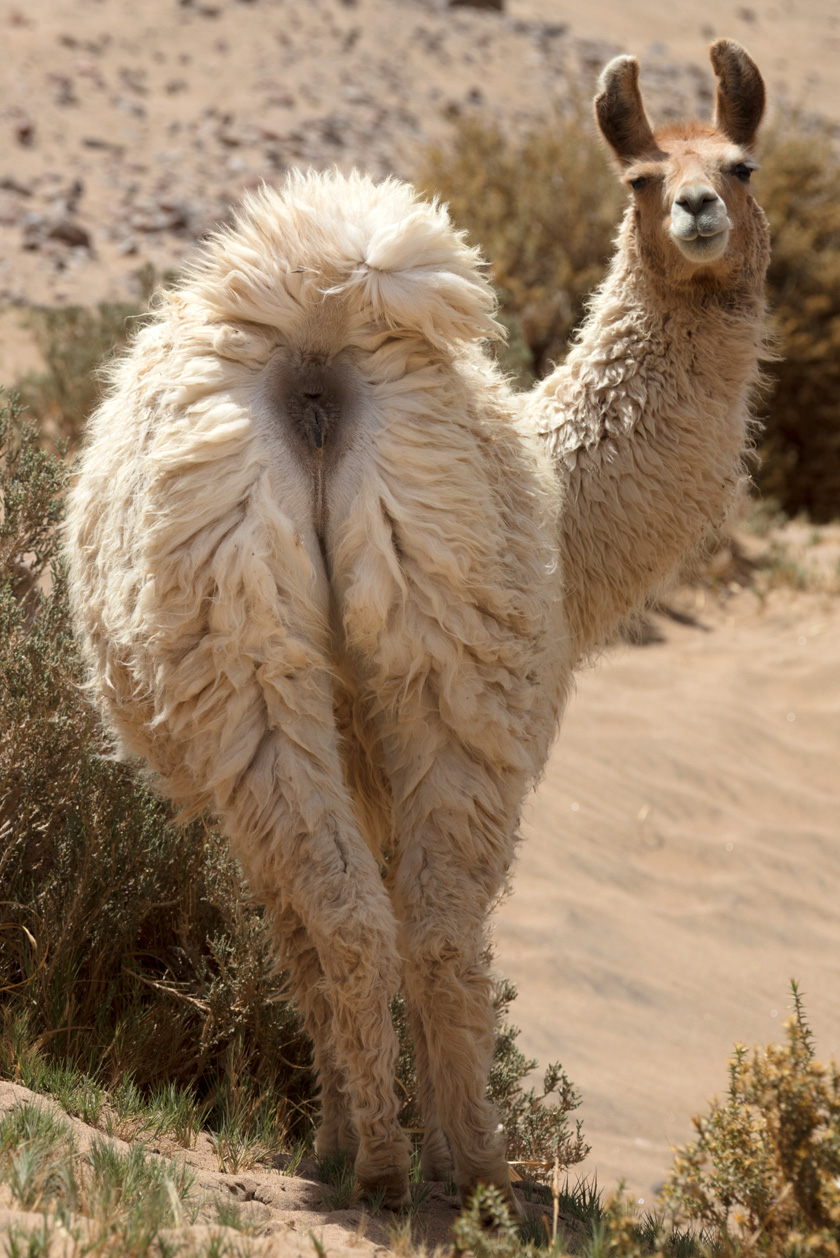
Llama.

Representation of a camelid phallus.
Camelids are the most frequently represented animals. Four species of them are found in the Andes—wild guanacos and vicuñas that are hunted for their meat, and domesticated llamas and alpacas, which must be pastured. The species most represented at Taira is the llama, which was essential to the herding economy of the time, both for its fleece and for use as a pack animal. The llamas depicted at Taira are usually full-grown, and very often pregnant or with offspring.
Images of felines and foxes also appear, although they are less frequent and smaller in size. Birds also figure in the rock art, including Andean rheas, tinamous, and birds unknown in nature, which we have interpreted as mythical birds.
Humans appear naked or clothed in tunics carrying staffs and playing drums. They are usually in the middle and upper parts of the panels in secondary positions relative to the camelids.
Images that are less common, but featured prominently when they do appear, are vulvas and penises. In the lower sectors of the rock panels we see grooves and holes that were intentionally made.
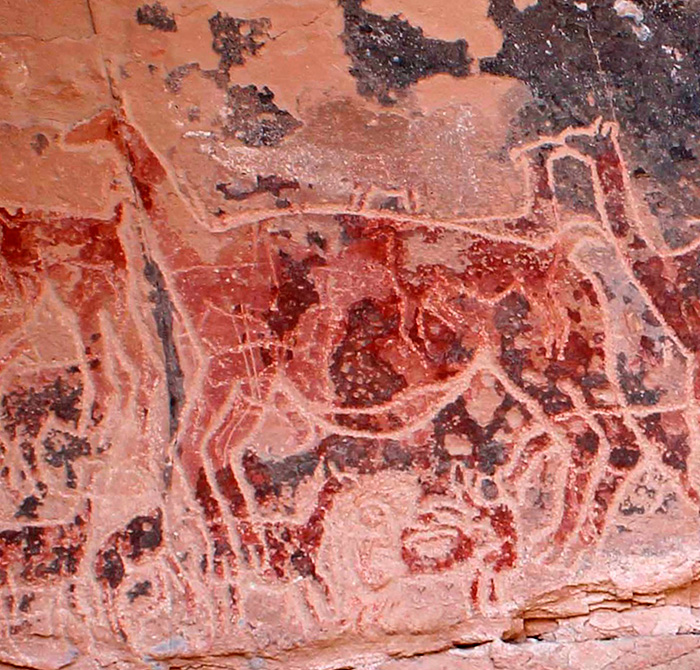
Characteristics of the Taira Style.
The artists created figures in a naturalist style, achieving a certain degree of realism. These forms tend to be simple, like silhouettes. The llamas are represented in front, back and profile views simultaneously.
The figures are found in different scales, and designs are superimposed upon each other. The width of the grooves also varies and the lines have multiple grooves, giving the impression of movement. Humans appear diminutive amidst this world full of large, semi-transparent llamas.




































